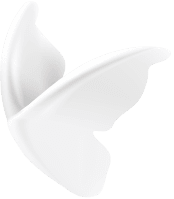Acne, a skin condition that affects up to 50 million people annually in the United States alone, stands as the most common dermatological issue worldwide. It casts a highly visible presence, leaving both physical scars and emotional distress in its wake. Dr. Quibell takes pride in the remarkable impact of the Platina Home Therapy system in alleviating this challenging condition.
In this article, Dr. Quibell and the Platina Team embark on an enlightening journey into the world of acne. They explore its root causes, delve into its various forms, and present effective strategies for relief.
Unmasking the culprits behind acne
Acne, at its core, stems from clogged pores, with hormonal fluctuations believed to be a key contributing factor. While it commonly emerges during puberty, affecting around 80% of adolescents and young adults, it can persist throughout life, inflicting anxiety and stress on sufferers. Research even reveals the profound impact of acne, including social withdrawal, loneliness, and internet addiction among affected individuals.
The multifaceted nature of acne
Contrary to popular belief, acne isn’t limited to the teenage years—it can strike at any stage of life. Here’s a glimpse into its diverse manifestations:
- Teenage acne: This familiar type typically surfaces during puberty, triggered by the surge of androgen hormones that enlarge the skin’s oil glands.
- Adult-onset acne: While often associated with menopause in females and hormone fluctuations in those with polycystic ovary syndrome, adult-onset acne can also affect males and result from medication or certain hair and skincare products.
- Neonatal acne: Occurring in approximately 1 in 5 newborns, neonatal acne usually emerges between the second and fourth weeks of life. The good news is that it naturally fades without scarring and doesn’t heighten the risk of severe acne later in life.
- Infantile acne: This rare form can afflict children aged 3 to 6 months, potentially leading to deep acne nodules, cysts, and permanent scars.
Triggers and aggravators of acne
In addition to hormones, several other factors can contribute to or exacerbate acne, including dietary choices, age, medications, smoking, family history, environmental irritants, and physical pressure from items like sports helmets, tight clothing, or backpacks. Stress is another recognised influencer.
The path to clearer skin
Treating acne varies depending on individual factors and the severity of the condition. Here are some common approaches:
- Topical medications: This category includes antibiotics, benzoyl peroxide, retinoids, salicylic acid, and sulphur.
- Good skincare: Platina’s effective skincare solutions have offered relief to countless acne sufferers.
- Oral medications: In some cases, healthcare providers may prescribe antibiotics or corticosteroids.
- Hormone therapy: Particularly useful for individuals with hormonal acne.
- Laser and light therapies: Advanced treatments that target acne.
- Chemical peels and surgical procedures: Effective for treating scarring associated with severe acne.
Navigating the complex world of acne requires a tailored approach. By understanding its nuances and the available treatments, individuals can embark on a journey toward clearer, healthier skin.


